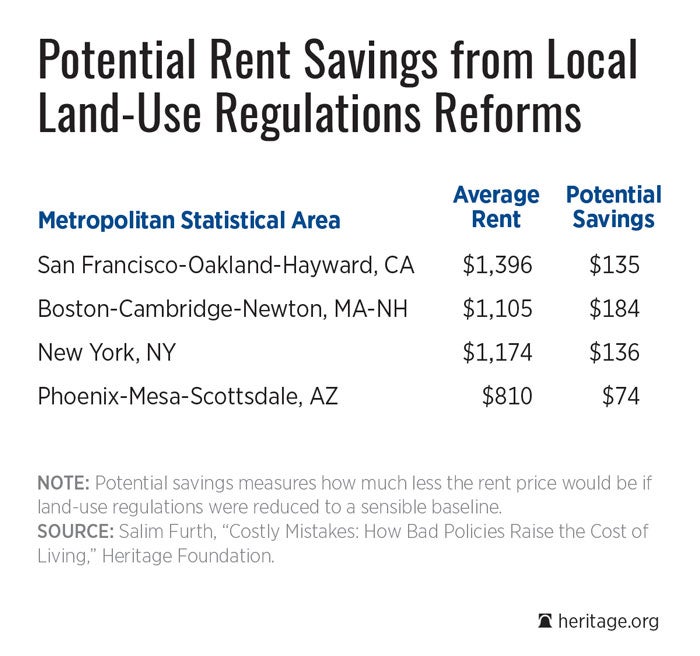A recent report out of Harvard University has found the number of struggling household renters at an all-time high. A table in the appendix of the report shows that almost half (49.3 percent) of renters in 2014 spent at least 30 percent of their household income on housing costs.
Why are so many spending so much?
The report acknowledges that part of the blame for the high rent falls on “local land-use regulations—such as zoning requirements, density and height restrictions, and minimum lot size and parking requirements.”
These regulations limit property owners and developers in how they are allowed to provide rental housing to customers.
The authors also state that “the steep rents for new units reflect rising land and development costs, which push multifamily construction to the high end of the market,” the end that low income renters cannot afford.
Since the problem is excessive land-use regulations and laws that curtail landlords from entering the affordable end of the rental market, getting rid of these harmful requirements would do a world of good.
Reforming residential land-use regulation would save American households $209 billion a year.
It is strange then that the authors of the Harvard study make no such recommendation. In fact, they praise more government planning for cities and suburbs that would make it even less affordable for building suppliers to enter low-rent markets.
Land-use reform could make a real difference though. A recent Heritage issue brief by Salim Furth notes that “Reforming residential land-use regulation would save American households $209 billion a year.”
In San Francisco and Boston, for example, the savings from land-use regulatory reform would be $1,620 per year and $2,208 per year for the average renter in those cities.
 Removing government land-use hoops, which private sector builders are forced to jump through, would go a long way toward helping the 49.3 percent of renters currently burdened by sky-high rents.
Removing government land-use hoops, which private sector builders are forced to jump through, would go a long way toward helping the 49.3 percent of renters currently burdened by sky-high rents.


























